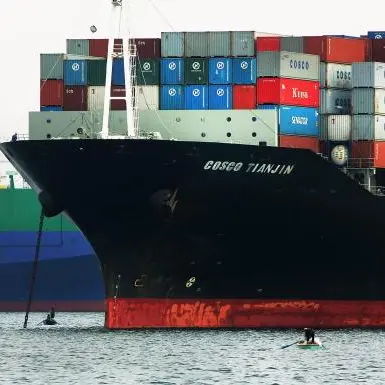PHOTO
(The author is a Reuters Breakingviews columnist. The opinions expressed are his own.)
MELBOURNE - World Water Day on Monday should be right up the finance industry’s canal. This year’s theme dives into how to value the resource, from equality of access to cultural issues. But the opportunity to address water’s financial worth is one Wall Street and its brethren ought not to let float by.
Banks from Morgan Stanley to Wells Fargo to HSBC barely mention it at all in their net-zero ambitions unveiled in recent months. Mostly they discuss financing clean-energy projects, stopping funding coal and Arctic drilling, and when they’ll set industry-specific goals.
Water’s apparent absence is unfortunate: Its treatment, delivery and use account for a good slug of greenhouse-gas emissions: for example, 5% in the United Kingdom, 10% in California and half in Australia’s state of Victoria, according to official data. JPMorgan did include clean water as one of several green projects in line for $50 billion of financing last year. That’s a drop in the ocean compared to the World Resource Institute’s estimate that $1 trillion a year is needed globally to ensure a sustainable supply.
Spending is required to build resilience to rising temperatures. That’s crucial as nine out of 10 climate-related natural disasters manifest through water – like the worst floods in 60 years ravaging parts of Australia; or the varying degrees of drought across almost half the United States. U.N. Secretary General Antonio Guterres in January called for half of climate finance to be devoted to adapting to such events.
There are examples for lenders to follow. Australian insurer IAG recently refused to back raising the walls of Sydney’s biggest dam. With more water currently cascading over the top than at Africa’s Victoria Falls, according to Stuart Khan at the University of New South Wales, that may seem wrongheaded. But the aim was to prevent further risky development in the floodplains.
So banks could refuse to offer financing or advice where climate change is worsening water scarcity, unless independently verified best practices are met. There are financial benefits: Companies responding to investor lobby group CDP’s water survey this month said the cost of ignoring such problems was five times higher than the expense of fixing them. Helping industries from agribusiness to mining to manufacturing up their water game could help banks plug their own sustainable-finance hole.
CONTEXT NEWS
- March 22 is World Water Day, held every year since 1993 and created by the United Nations. This year’s theme is the value of water.
- The world is not on track to achieve the goals set out for SDG 6, the sustainable development goal that focuses on water, the United Nations said on March 18.
- Residents around Sydney, Australia, are enduring the worst flood in 60 years after three days of incessant rain swelled rivers in the state of New South Wales. More than 18,000 people have been evacuated.
- Almost half of the United States is dealing with moderate to exceptional drought conditions as meteorological spring approaches, the United States’ National Oceanic and Atmospheric Administration revealed on March 18.
(The author is a Reuters Breakingviews columnist. The opinions expressed are his own.)
(Editing by Una Galani and Karen Kwok) ((antony.currie@thomsonreuters.com; Reuters Messaging: antony.currie.thomsonreuters.com@reuters.net))












